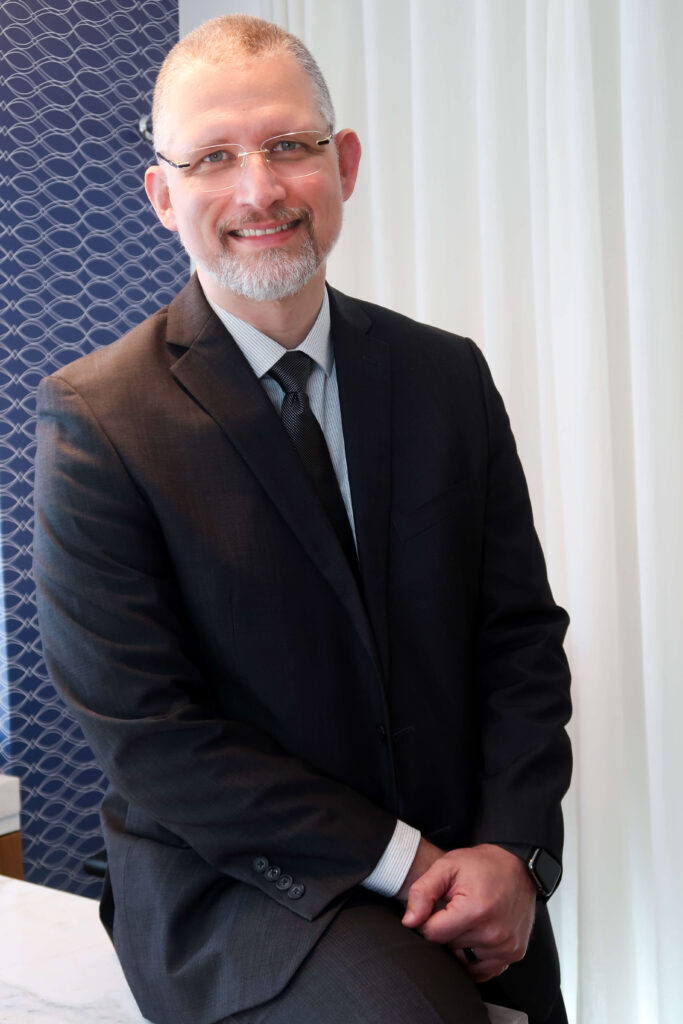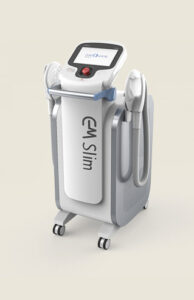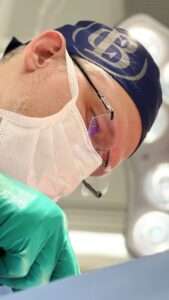

Thigh lift
Crural dermolipectomy
The thighs are areas prone to fat accumulation and sagging skin. Crural dermolipectomy, also known as a thigh lift, aims to reduce excess fat and sagging skin in the inner and upper thighs.
During the procedure, an incision is made which can extend from the inguinal fold to the gluteal fold and, in some cases, to the knee. This incision allows liposuction to treat localized fat and the removal of excess skin.
Due to the natural movements of the area and gravity, scars may not have an ideal aesthetic quality and may require additional procedures to improve their appearance.
Further information about the thigh lift
Cruroplasty is indicated for patients who have sagging skin, excess fat or ptosis (drooping) in the thigh tissues, which can be caused by various factors, including weight gain or loss, ageing or genetic predisposition.
The Different Levels of Treatment:
-
First level:
- Fat gain without sagging skin or tissue loss.
- In younger patients, the skin generally has good elasticity and can be treated with conventional liposuction or SLIMLIPO.
-
Second level:
- Mild sagging of the skin, with or without increased fat, and slight tissue loss.
- It may involve a combination of liposuction and skin resection along the inguino-crural fold, and a “Mini T” scar may be necessary in selected cases.
-
Third level:
- Moderate to severe sagging skin, with or without increased fat.
- It involves the surgical resection of skin and fat, resulting in a T-shaped scar on the inside of the thigh.
Preoperative Cruroplasty
- 1. Do not use medication based on Acetyl Salicylic Acid, Ginkobiloba or Arnica in the 10 days prior to surgery. Their use will lead to your surgery being suspended until this 10-day period has elapsed.
- 2. Obey the instructions given for admission
- 3. Report any abnormalities that may occur in their general condition.
- 4. Enter hospital fasting for at least 8 hours and do not bring valuables into the hospital.
- 5. Come accompanied to the hospital.
- 6. Avoid wearing earrings, rings, piercings, colored nail polish, etc. Any of these will be removed before surgery.
- 7. The recommended belt should be taken to the hospital.
Postoperative Cruroplasty
- 1. avoid exertion for 30 days.
- 2. Avoid stretching the trunk for 30 days, unless specifically advised by the surgeon.
- 3. Do not expose yourself to the sun or cold for at least 14 days.
- 4. Obey the doctor's prescription.
- 5. Return to the office for subsequent dressings, on the days and at the times stipulated.
- 6. Don't worry about the intermediate forms in the various phases. Ask your surgeon any questions you may have.
- 7. Normal diet (except in special cases). We recommend a high-protein diet (meat, eggs, milk) as well as fruit.
- 8. Wait to go on your "diet or slimming regime" once you've been cleared by your doctor. Anticipating such conduct on your own could lead to difficult consequences.
- 10. Wear the compression garment 24 hours a day, only taking it off to shower, for the first 30 days and for 12 hours a day for the next 30 days.
Other body procedures
Surgeries and procedures performed by Dr. Celso Boechat
Other Plastic Surgeries in Rio de Janeiro
From stunning beaches to vibrant aesthetics, discover the plastic surgeries that reflect Rio de Janeiro’s beautiful spirit and dynamic aesthetic standards.
Breast surgery
Raise your self-esteem, reaffirm your beauty.
Body Surgeries
Transformations for your ideal body.
Facial surgery
Facial renewal, bring out your true expression.
Answers about the thigh lift
Crural Dermolipectomy: The most frequently asked questions about thigh lifts
Yes, scars can be visible, but their aesthetic quality depends on several factors, including the surgical technique and the patient’s ability to heal.
It usually takes a few months for the patient to see the final result of thigh lift surgery, as the swelling subsides and the scars mature.
- Discomfort is common after surgery, but is manageable with medication prescribed by the plastic surgeon.
Thigh lift surgery can be performed under general anesthesia or local anesthesia with sedation, depending on the patient’s preferences and the surgeon’s recommendation.
Surgery time can vary, but generally takes between two and four hours, depending on the extent of the procedure.
Most patients can be discharged on the same day as surgery or the following day, although this can vary according to the extent of the procedure and the patient’s individual response.
Yes, suitable dressings are applied after surgery to protect the incisions and aid healing.
The stitches are usually removed at a follow-up appointment about one to two weeks after surgery, depending on the surgeon’s recommendation.
Full bathing is usually allowed after a few days, as advised by the surgeon, avoiding directly wetting the incisions.
This depends on the specific health plan and the patient’s individual conditions. It is advisable to check coverage with your health insurance before the procedure.
Possible risks of a thigh lift
PLASTIC SURGERY, like any other surgery, has risks and complications, some of which are specific to it and others that are generic to any type of surgery. These include:
Generic
1. Allergies: Some medications or products used during surgery can cause allergic reactions, which can even lead to death. Allergic reactions are patient-dependent and can occur either to medicines or products that the patient has never had contact with, or to those that they have had previous contact with, even if they didn’t have a previous reaction.
2. Infection: Our body is colonized by countless bacteria, with which, at first, we live in extreme harmony. However, after surgery, they can cause infection, requiring treatment with antibiotics and rarely re-operation.
3. Hematoma: Accumulation of blood in the operated area, from a vessel that was not bleeding at the end of the operation, but did so in the immediate post-operative period. It can be treated by aspiration with a syringe and needle or, rarely, re-operation may be necessary.


Book your appointment
Find out everything you need in one consultation


Appointment
Make an appointment and get your questions answered
Schedule an appointment with plastic surgeon Dr. Celso Boechat. Discover the path to aesthetic transformation and improved self-esteem. Our specialized team is ready to guide you through the procedure options, answering your questions and creating a personalized plan to suit your needs. Book your appointment now and take the first step towards a more confident and radiant version of yourself.
Send a message via WhatsApp
Service and consultations
Call Us
(21) 997336862
Opening hours
Monday to Friday - 09:00 - 21:00
Saturdays and Sundays - Closed, only for surgeries




